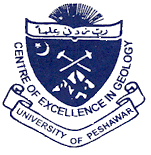 The earthquake of 8 October 2005, measuring 7.6 Richter scale caused
unprecedented loss of lives and property in parts of the north-eastern Pakistan.
It was reported that exceeding 76,000 death toll, over 2 million people
requiring immediate life-saving relief assistance and some 3-4 million people
have been affected from the earthquake. The earthquake of 8 October 2005, measuring 7.6 Richter scale caused
unprecedented loss of lives and property in parts of the north-eastern Pakistan.
It was reported that exceeding 76,000 death toll, over 2 million people
requiring immediate life-saving relief assistance and some 3-4 million people
have been affected from the earthquake.
The disaster sparked worldwide concern and a massive relief effort from all
sections from private citizens to non-Government and Government organisations
rushed to the affected areas to help in the rescue operations. This hitherto
unprecedented national solidarity and efforts received tremendous support from
the international community with generous contributions in the form of cash,
food, emergency shelter and clothing, technical expertise and human resources
[ICIMOD Mission - Dec. 2005]. In addition to the immediate relief effort to the
earthquake victims ICIMOD supported to the peoples of remote region in Hilkot
Village by providing tents.
 In an effort to rebuild adhering to the national "motto" build-back-better will
need greater understanding of the causes and effects of earthquakes and
multi-hazards induced due to earthquake. To formulate the effective
rehabilitation and reconstructions programme, the National Centre of Excellence
in Geology (NCEG - Peshawar) and International Centre for Integrated Mountain
Development (ICIMOD - Kathmandu) in collaboration with International Institute
of Geo-Information and Earth Sciences (ITC - The Netherlands) and Asian Disaster
Preparedness Centre (ADPC - Bangkok) organised the training cum workshop from 13
to 31 March 2006 in Pakistan Academy of Sciences, Islamabad, Pakistan. In an effort to rebuild adhering to the national "motto" build-back-better will
need greater understanding of the causes and effects of earthquakes and
multi-hazards induced due to earthquake. To formulate the effective
rehabilitation and reconstructions programme, the National Centre of Excellence
in Geology (NCEG - Peshawar) and International Centre for Integrated Mountain
Development (ICIMOD - Kathmandu) in collaboration with International Institute
of Geo-Information and Earth Sciences (ITC - The Netherlands) and Asian Disaster
Preparedness Centre (ADPC - Bangkok) organised the training cum workshop from 13
to 31 March 2006 in Pakistan Academy of Sciences, Islamabad, Pakistan.
The present training programme on "Earthquake Vulnerability and Multi-Hazard
Risk Assessment" is aimed at complementing national efforts to strengthen
institutions capacity to utilize modern decision support system tools in
earthquake disaster management. Altogether 34 participants from Earthquake
Reconstruction and Rehabilitation Authority, Micro Seismic Studies Programme,
SUPARCO, Pakistan Army, National Engineering Services, Aga Khan Planning and
Building Service, National Centre of Excellence in Geology, Ministry of Water
and Power, University of Engineering and Technology, National Agricultural
Research Centre, Pakistan Atomic Energy Commission, National Institute of
Oceanography, Atomic Energy Minerals Centre, Quid-i-Azam University, Northern
Area Pakistan Works Department, Federal Urdu University of Science and
Technology, University of Punjab, Focus Humanitarian Assistance, Agha Khan
Cultural Service, Afghan Globe Consultancy from Pakistan, Afghanistan and
Tajikistan.
|

